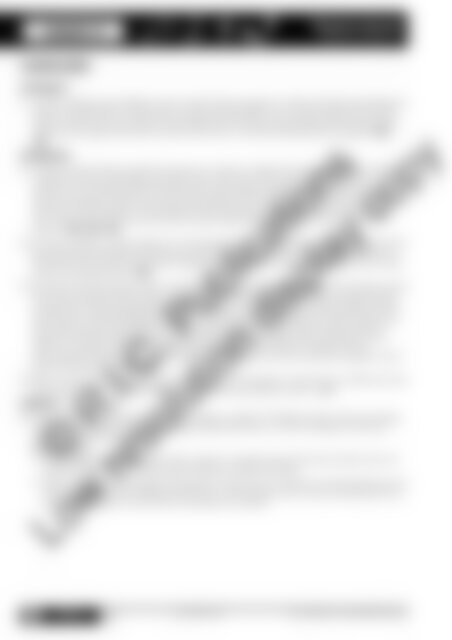6172RB Science a STEM approach Year 2 low res watermark
You also want an ePaper? Increase the reach of your titles
YUMPU automatically turns print PDFs into web optimized ePapers that Google loves.
Lesson 4<br />
Physical sciences<br />
FORCED TO MOVE<br />
Lesson plan<br />
Introduction:<br />
1. In pairs, students play a different version of the Fish force game at by selecting the create option instead. Students take turns to create a game for the other<br />
student to play. As a class, discuss what students found was the trickiest part about knowing how<br />
much force to apply, the position to place the cannon, and what obstacles they navigated. QP<br />
PC<br />
Development:<br />
2. Load the video showing a game of tug of war in action at . Before<br />
viewing the video, ask students to predict which team they think will win—the team with two<br />
children or the individual child. View the video and compare students’ predictions to the <strong>res</strong>ult.<br />
Discuss the questions, What force was being applied by each team? Why do you think the individual<br />
child won? If both children in the losing team were as big and strong as the child in the winning<br />
team, who do you think would win? Does a heavy object always need more than one person to<br />
move it? QP PC PA<br />
3. Give each student a copy of page 127. Individually, students predict how much force they think will<br />
be required to push and pull a tissue box and a bucket, when they are empty and when they are<br />
filled with sand. Students record their predictions on page 127, using a 5-point scale, from a small<br />
amount to a large amount. QP<br />
4. Divide the class into groups of four and give each group an empty tissue box and an empty bucket.<br />
As a group, students work outside in a sandpit, to investigate how much force is needed to push<br />
and pull each object. Students will need to measure a controlled distance that the objects will be<br />
pushed and a controlled height that the objects will be pulled to. All group members should test<br />
each object and discuss what they think the <strong>res</strong>ult should be. This will minimise the variation in<br />
student’s individual <strong>res</strong>ults that are greatly impacted by the strength of the invidividual. Using<br />
page 127, students individually record their group’s <strong>res</strong>ult for each test. Students may be<br />
encouraged to check their <strong>res</strong>ults by comparing two objects at a time to see if the <strong>res</strong>ults for each<br />
object are reasonable. PC PA<br />
5. Return to the classroom and ask groups to pair up to compare their <strong>res</strong>ults. For any differing <strong>res</strong>ults,<br />
each group should record the other group’s <strong>res</strong>ult using a different colour. E<br />
Reflection:<br />
6. Individually, students review both groups answers on page 127. Students then communicate their<br />
understanding of how the mass of an object affects the amount of force needed to move it by<br />
completing page 128. C<br />
Differentiation:<br />
• Less capable students may work with an adult to complete page 128 orally. Students may also<br />
be given each object to compare again before providing an answer.<br />
• More capable students may be encouraged to write their own sentences comparing the amount<br />
of force needed to move different stationery or craft supplies, such as a pencil needs less force<br />
than a stapler does to move it from one position to another.<br />
© R.I.C. Publications<br />
Low <strong>res</strong>olution display copy<br />
126 <strong>Science</strong>:<br />
A <strong>STEM</strong> APPROACH<br />
YEAR<br />
2<br />
978-1-925431-95-7 R.I.C. Publications® – www.ricpublications.com.au


















